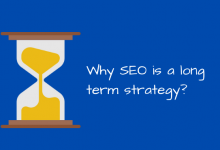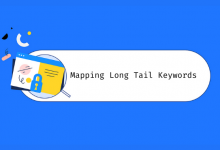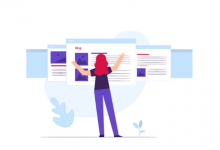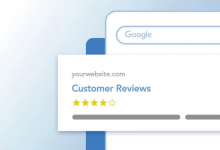SEO: The Ultimate Guide to Ranking in Google
SEO keeps everyone under the spell: from marketer to business manager, from copywriter to web developer. We all want to score higher ranking in Google, but don’t always understand how.
Need help with your SEO campaigns? Looking for some concrete tips? Or have you never heard of SEO? This guide will guide you through the do’s and don’ts of search engine optimization and is a useful guide for both beginners and advanced users.
Table of Content
What is SEO?
SEO stands for Search Engine Optimization. Better known in Dutch as search engine optimization. In summary, SEO is the denominator for all the steps you take to make your website rank higher in Google.
Search engine optimization is a collection of techniques aimed at optimizing your website with the aim of a higher position in the search results. In less technical words: investing in SEO makes your website easier to find in Google.
Reading Tips: What is SEO? A Clear Overview
The role of search engine optimization
To determine the position of your website in the search engine, Google works with a ranking algorithm. By taking these ranking factors into account, you can positively influence the position of your website.
After all, that is what SEO is all about: betting on ranking factors that influence the position of your website.
At first glance, SEO seems quite simple. Still, you shouldn’t underestimate this. Search engine optimization is a struggle. You have to consider both your visitors and Google.
You can design a flashy and visually attractive design, but if Google doesn’t share your opinion, you’re screwed.
How to register your website with Google?
Before Google can assess your site for SEO friendliness, Google must of course first be able to find your site. A lot of companies, therefore, ask themselves whether they should register their website somewhere.
Fortunately, that is not the case. Registering your website on the web is usually automatic and completely free.
Google is an automated search engine that uses so-called web crawlers. These are bots that browse the world wide web in a methodical way. We call this browsing indexation.
Web crawlers analyze the different web pages of your site and check what they are about. They do this very quickly. Most of the websites you see in the search results were not added manually but were automatically found by the Google bots during the crawl.
Check if your site is indexed
As we told you before, your website is automatically indexed and you do not have to do anything about this.
Do you want to be on the safe side, and do you want to know whether your website was actually found by Google? Thanks to a simple search, you can easily discover whether your website is included in the Google index.
site: www.yourdomainname.be
site: kreatix.be
Although Google’s web crawlers research billions of websites, the chances remain that your website will not be found. Difficult, but not insurmountable.
The main reason Google’s web crawlers failed to index your site is that Google received an error while crawling. A bad site that is not properly built can be the cause of this error.
Of course, it is also possible that Google has not yet had time to crawl your website. In that case, you have nothing left to do but wait.
Speed up Google’s indexing process
Don’t have time to wait? Then you can try to speed up the indexation process. You do this by using the Google Search Console: a free web service from Google that allows webmasters to check the indexing status of their site.
Via the Google Search Console, you can upload your sitemap, see if there are crawl errors, and you can manually ask Google to index specific pages.
What are the benefits of SEO?
# 1 SEO is beneficial for your piggy bank
When you invest in SEO, there are no advertising costs. You do not pay per click or impression. Your costs do not depend on the number of visitors you attract. The only investment that search engine optimization requires is that of time and effort.
# 2 SEO ensures long-term sustainable results
Are you investing in an optimized website and effective content? Then you will benefit from it for a long time. SEO is therefore a sustainable investment that ensures your right to exist in the future.
Blog articles written a few years ago can still hold their position at the top of the search results. Of course, this only applies to excellent articles, which are regularly updated.
Moreover, you are not limited by budget. Even when you turn the money tap, you can still be found in search engines. The effort you put into search engine optimization is never lost.
# 3 Organic search results are credible
Companies that spend a lot of money on (online) advertising lose a lot of credibilities. Some consumers are quite suspicious of online advertising, and soon think they will fall victim to clickbait.
Organic search results
A number one organic place, on the other hand, usually gets the blind trust of surfers. Nobody questions the credibility of your business when you rank # 1 in Google.
SEO vs. SEA: what’s the difference?
SEO and SEA are opposites and complement each other seamlessly, just like Yin & Yang did. Being present on the web organically as well as paying reinforces each other. The one does not necessarily exclude the other. A good mix of both is the key to success.
# 1 Organic vs. paying
SEO focuses on a high position in the organic part of the search results, while SEA focuses on a profitable position in the sponsored results.
The optimization of your website with the objective of organic search traffic generate is free. Advertising by buying advertising space within search engines is paying.
# 2 Long term vs. short-term
Unlike organic search results, paid search results do not need to be indexed by the Google search engine.
We know from experience that it can sometimes take months before you see any results in your organic search results. So you can imagine that it is difficult to switch quickly – organically.
# 3 Reliability vs. visibility
You can buy visibility, but not credibility. A website that has organically secured its place at the top of Google is more likely to be considered reliable.
Inbound marketing is based on this belief. This marketing philosophy is based on the genuine interest of the customer. The generation of leads occurs organically.
Paid ads provide better visibility but arouse some internet surfers’ suspicion. Organic results, on the other hand, get the blind confidence of consumers.
Why is SEO important to your business?
Darwin’s well-known rule of survival of the fittest also applies online. The lower your ranking in Google, the less likely your website will be noticed. The difference in click rate between the first and second page of the search results confirms this premise.
The first page of the search results gets more than 95% of the clicks. For the math geniuses among us, this means, yes, only a less than 5% chance that your website will be found online if you are on page two of the search results. Can you imagine what a third, fourth, or fifth page means to your website?
Exactly. As a company, it is best to ensure that your website scores well organically. If not, people will not find your website. This way you miss out on gigantic opportunities to drive traffic to your website.
Do you want to prevent your website from dying a silent death? Then investing in SEO is a must. Generating a continuous, organic influx of traffic to your website offers nothing but benefits.
The building blocks of SEO
The infamous SEO algorithm is Google’s best-kept secret. Marketers may take a gamble, but they are never 100%sure. What we do know for sure is that the art of search engine optimization rests on a few important pillars.
Keywords
Although Google’s ranking algorithm is constantly changing, the importance of keywords remains constant. The power of a targeted SEO strategy is therefore in scoring on different keywords.
Contrary to what you might think, it is not just any keywords you include in your strategy. For example, betting on popular keywords with a significant search volume is difficult, as large chains already dominate the market with them.
For that reason, extensive keyword research is the basis of a successful SEO policy. We will further elaborate on exactly how such an investigation works in this manual.
On-page SEO
In addition to betting on relevant keywords, various other factors on your website also contribute to a higher position in Google.
In general, search engine optimization makes an important distinction between on-page factors on the one hand and off-page factors on the other.
On-page SEO includes all factors on your website itself that contribute to the search engine optimization of your website and includes everything the user sees and experiences. As a site owner, you have complete control over these factors. Usually, it involves things like:
- Meta title
- Headings
- Meta description
- URL
- Bread text
- Pictures
- Charging time
- Sitemap
Does this sound like Chinese? We take a look at them below and see why they are important. You are of course not obliged to optimize all these factors separately, but together they definitely contribute to a higher ranking.
Meta title
The meta title or page title is what internet surfers immediately see in the search results. It gives the first impression of your company, take this into account!
Why is a meta title so important now? Google’s search engine indexes the various web pages that match the search terms that a user enters.
This indexation is done, as you already read, on the basis of spiders who analyze and read the various web pages. The use of a meta title facilitates this search process.
By reading this title, the Google search engine can find out more quickly what the page is about.
Headings
Heading tags are used to add structure to your web page. Compare it with a paper book: it consists of chapters, titles, and paragraphs. Just imagine a book without titles or subtitles. That would be a mess, wouldn’t it?
Your headings, therefore, provide the structure of your text, for both your visitors and Google. The ranking goes from H1 (largest) to H6 (smallest). Incidentally, an H1 tag can only appear once per page.
Meta description
The meta title tells us in one catchphrase what the web page is about. The meta description on the other hand allows us a little more words to clarify what the webpage is about.
The meta description will appear directly below the page title in the search results. Here you provide a concise, but intriguing description of your page.
By optimizing the meta description of a page in this way, you increase the click-through percentage; an important ranking factor for Google.
URL
You read it right! Your URL also falls under the optimization options. Again try adding your keywords (or some variation of them) here. Like the title, it is a kind of description of your page.
In addition, avoid underscores in your URL. Underscores make your URL difficult to read for Google. Instead, opt for hyphens.
Bread text
This includes most of your content. The body text is all continuous text (paragraphs) and is therefore the text that your website visitor is looking for. Write these texts naturally: use variations of your keywords.
Do not repeatedly use the same keyword in your text. Google also punishes you for this. Natural texts read easily and are written in a pleasant, comprehensible writing style. The goal is to generate more interest from your visitor.
Pictures
Images and alt tags go hand in hand. An alt tag (alternative text) ensures that Google understands your image, as the search engine can only read the text. It is therefore best to name the image in a relevant way for your page.
Charging time
Finally, it is important to tinker with the loading time of your site. Search engines increasingly value pages that load quickly.
A golden rule regarding the loading time of your website: the loading time should not be longer than 3 seconds. Failure to meet this loading time will ultimately result in a negative impact on the ranking of your website.
Sitemaps
On the basis of a sitemap, you give a summary to Google of all pages on your website. Websites that are easier and faster to read for the Google web crawler are rewarded with a higher position in the search network.
Off-page SEO
The popularity, relevance, and reliability of your website are also important factors that Google takes into account.
In contrast to on-page optimizations, you have less control over such optimizations. This makes off-page optimizations more difficult to handle.
What you can try is to bet on link building. You can also contribute by using social media.
Link building
Link building is all about generating links from external web pages to your website. We sometimes call these links backlinks. View it as a kind of reference. The more backlinks referring to your website, the more you will be rewarded by Google.
Of course, you don’t earn these backlinks just like that. You can of course call around and ask website administrators if they want to refer to your website, but be careful: not every link counts as a suitable reference.
Has the page linked to your already established authority on the Internet? Then the link will certainly contribute to your ranking. Is this page also relevant to the products or services you offer? Even better.
When a page refers to you that is not relevant to your topic, or worse, is marked as spam by Google, this can turn out badly for you. So choose your links carefully and choose quality. Not for quantity.
Social media
Deploying on social media is one of the most obvious methods to generate referrals to your website. Social media is gradually getting more and more impact on search results in Google.
A logical development, because when someone recommends your website to their connections via social media, it is an extra popularity indicator for Google to measure.
Reviews, check-ins, comments, and social media shares are important for the ranking of your website. It also contributes to the social proof of your company.
SEO in practice: how do you take the first steps?
You now know the most important fundamentals of SEO. Time to put this theory into practice. How do you take the concrete steps to optimize your website for Google?
Invest in content marketing
As we said before, the power of a targeted SEO strategy is in scoring on different keywords. Content marketing is inextricably linked to this. I will be happy to explain how that works.
The concrete goal of SEO is to be at the top of the search results when keywords are entered via Google that is related to your product or service. Right?
Well, before you can achieve this goal, it is necessary to produce relevant content about these search terms. Blog articles are a perfect example of this. Regular new content to publish on your site puts Google in the first place to come regularly.
Moreover, at best, a blog article triggers different search terms related to your business, and in that way, you attract more traffic to your site via these articles.
Take the blog article we wrote about a Wix website as an example. Part of our target group has their site built on that platform. Unfortunately, Wix’s software is not very strong, and we want to warn professionals about this.
In recent months, the article rose organically on all kinds of search terms related to the search term Wix. When potential leads want to inquire about getting their website built in Wix, they bump into our blog article. These are website visitors that we would not have been able to welcome otherwise.
The presence of blogs, therefore, has a strong influence on the findability of your website. Curious about how to get started with SEO blogging? Then be sure to read on.
Step 1: Do a keyword research
What you should focus on in the first place is choosing keywords. By betting on the right keywords, it is more likely that your site will rank high in search results.
But how do you choose the right keywords? Easy; based on keyword research. Only then can you find out the most valuable keywords.
It may seem time-consuming, but the best way to get ideas is brainstorming. Write down everything (absolutely everything) that comes to mind that you think is relevant to your company.
Have you made a rough selection? Then you can rely on a number of valuable keyword tools. These tools give you insight into some interesting statistics, and give you an idea of search volumes and competition strength, among other things.
Some tools also recommend suggestions. The search terms your potential customers use may not always be the same as the ones you had in mind. Keyword suggestions are therefore of indispensable value.
Finally, it is also important to take a look at what the competition is doing. Google keywords for which you would like to rank. The names at the top of the list dominate the market. If these are major players such as Zalando or Amazon, it is better to choose other keywords.
Are the names less familiar to you? Then you have found a good keyword! This method is useful to learn a lot with few tools.
Step 2: Create a buyer persona
Before you can publish relevant content that scores in Google, it is necessary to be able to describe your target group as specifically as possible. Drawing up a buyer persona can help with this. It is a detailed profile of your most important customer.
It is important to be able to get under the skin of potential customers, in order to search for topics that are relevant to your target group. Writing a blog article that focuses on keywords that are relevant to your business is important, but the topic you write about must of course also concern your target group.
A common mistake when creating a buyer persona is that a lot of people are focused on defining demographics. However, this is not the main issue.
What difficulties does your buyer persona experience? Can you detect pain points? What questions do they have? Those are questions that matter.
If you don’t think you know the answers to these questions, then you are wrong. You often know more than you think. Dig deep into your databases, but also talk to the different departments within your company.
The three most important departments, in this case, are sales, marketing & customer support. Combine these three forces to learn more about your current customers, and thus translate this to your new target group.
Step 3: Get started writing
It’s time to get your pen out. You can start writing based on keyword volumes, competition analysis, and well-founded persona research.
Focus mainly on writing long-form content. Extensive articles initially demonstrate that you as a brand have taken the time to write about a topic that concerns your target audience. Moreover, long-form content simply improves your ranking in Google.
It is true that a few years ago you could satisfy Google’s search engines by writing a blog article between 500 and 750 words. It was a breeze to appear on the first page with your blog article, and that was never missed.
The consequence of this? Search engines over time became filled with short, and often incomplete blog posts. Google then decided to include content quality as a ranking factor. This quality is determined, among other things, by dwell time.
The longer the dwell time of an article, the higher it’s quality rating. It goes without saying that long-form content keeps visitors on your page for longer, as it takes longer to read such articles.
The logical consequence of this is that the dwell time for long-form content is on average higher than for short-form content so that long-form content is often rewarded with a higher position in Google. So do you want to score well in search engines? Then the rule of quality over quantity applies.
Optimizing your site for Google
Step 1: Provide all pages on your site with meta tags
Meta tags are the foundation of search engine optimization. By meta tags, we mean the meta title and meta description of each page.
The first rule to keep in mind is to include the keywords you previously registered in the title. The best length for the title is between 35 and 65 characters. Make the title tags concise and use the most important keywords.
You turn your meta description into a concise but intriguing description of your page so that surfers actually click through. The best length for the description is between 70 and 320 characters.
Step 1: Add alt tags to your images
In combination with the use of a meta title and meta description, the use of an alt tag completes the basics of on-page optimization.
In most content management systems, you can easily add an alt tag to your images. We usually use WordPress, where you can enter the alt tag in the media library without any problems.
Step 2: Upload your sitemap to the Google Search Console
Usually, Google automatically picks up your sitemap, if you have one. However, this can take a while. To shorten the waiting time, you can submit your sitemap to Google itself. This can be done via the Google Search Console.
Step 3: shorten permalinks
As you may have read earlier in this manual, it is recommended to include your main keyword in the URL of your page. Underscores are also out of the question. Finally, it is also useful to shorten your permalinks (or URL).
If you do not shorten a permalink, you will usually see a long and complex URL. For example, think of a blog article:
Step 4: use caching
We can consider cache memory as the working brain of your internet browser. Like human memory, cache memory is a storage place for data.
By using caching, the website can be loaded a lot faster. It ensures that certain file types such as HTML, CSS, and images are stored in the browser of your users when they first visit a site.
The next time you visit the website, the loading time will be much faster than the first time. After all, the cache of your browser has already stored the data of this site and does not have to collect it again.
That is pleasant for visitors, but also for search engines. Google loves sites that load quickly and will reward them with a higher ranking in the search results.
Step 5: Compress your images
Do you want to optimize the loading speed of your site? Then in addition to caching, compressing your images is also a must. When you compress a file, you reduce the file size without sacrificing quality. It is an important step that you should not skip.
Uncompressed images are usually the biggest cause of slow websites. This makes sense because on average images are more than two-thirds of the total size to be loaded.
Step 6: Collect quality backlinks
There are many ways to generate backlinks. For example, you can register with online web guides, actively participate in weblogs or have product reviews written by bloggers.
The pitfalls of SEO
In every game there are cheaters. Backlinks are bought and social media manipulated. Do you practice fair play? Then you follow the white hat principle. Are you trying to bypass Google’s search engine by cheating? Then you do black hat SEO. Make no mistake though: Google is taking the necessary measures to penalize black hat SEO. Read here what you should not do.
Keyword stuffing: keyword overuse
Google expects you to integrate your keywords in a natural way. When Google uses the same keyword 50 times on a page, it will be marked as suspicious. In the worst case, Google sees your website as spam and will therefore certainly not be presented on the first page.
Cloaking: hiding text
Cloaking is a technique in which the content of the website presented to the Google search engine differs from the content that visitors see. By means of cloaking one can actually fool the search engine since what Google reads does not correspond to reality.
A common trick is to spam your entire page with keywords in the same color as your background. In this way, the text is invisible to your visitor but readable by search engines. However, Google is not from yesterday. Not even from the day before yesterday. Whoever burns his buttocks will therefore have to sit on the blisters.
Duplicated content: repetition of text
If you copy the content of other websites or if you set up multiple pages on your website with exactly the same content, Google will penalize you with a lower position. Indeed, deceptive practices like this one can lead to a bad user experience when a user sees largely the same content in a series of search results.
Link exchange programs: buy backlinks
Like other products, backlinks are also put up for sale on the black market. For example, there are networks of websites that link to each other in order to manipulate the search results in Google.
Links that are intended to manipulate a site’s ranking in Google search results are tracked and disapproved by Google.
Moreover, the focus used to be mainly on the number of backlinks, less on the quantity. Today that is no longer the case. Buying backlinks is therefore no longer of this time.
Free SEO tools to Ranking in Google
Have you invested in a website? Good. That is the first step to be found online. What you now only remain are website visitors. Unfortunately, these did not come out of the blue.
To make your website findable in search engines, you have to invest in SEO. A position on the first page of Google (or Bing) is not just thrown into your lap.
In exchange for a prominent place on the results page of Google, you will have to optimize the content or content of your website for search engines. If you don’t do this, your site will die an (organic) silent death.
You know what they say: the best place to hide a corpse is on page two of Google search results.
We understand that SEO is not a breeze, quite the contrary. A helping hand can never hurt. We put our heads together in our team and collected – in our opinion – the best, free SEO tools in one blog article.
Disclaimer: SEO tools are useful. At Kreatix we also often use the tools below. However, keep in mind that tools are only a tool. No tool can crack that SEO note for you. Also not against payment. Ultimately, the solution is still yours.
Shall we?
Ranking in Google by Keyword research
Creating good content is a cost-efficient way to bring in new leads & is an important factor for findability in Google.
Keyword research is therefore the basis of every good blog article or content piece. You want to be found on search terms that are relevant to your business. If you miss the ball here, you will attract crappy traffic flows to your site.
# 1 Answer The Public
The system behind Answer The Public’s site collects all Google searches in bulk and divides them into different lists.
This is very useful if you want to know what questions surfers ask Google about a certain topic.
For example, when we request data about the keyword SEO, we see that people mainly search the internet for the meaning of this search term and how you apply SEO in practice.
# 2 Ahrefs Keyword Generator
With the free Keyword Generator Tool from Ahrefs, you can test up to ten searches for free based on their data.
Ahrefs database shows you monthly search volume estimates based on clickstream data and other advanced SEO metrics, such as a keyword’s KD or Keyword Difficulty.
Based on the search query you enter, the Ahrefs Keyword Generator will present you with related keyword suggestions or search for frequently asked questions.
# 3 Google Trends
Google Trends is a service from Google that provides insight on the basis of graphs when and how often a certain word has been searched with Google.
To look more into the future of search volumes around certain keywords, Google Trends is a good option.
In the case of Mariah Carey ever amnesia would suffer, she can happily still count on the Google Trends data to predict when they can again collect money from royalties.
# 4 Ubersuggest
Ubersuggest has a ton of features that are usually only disclosed in premium SEO tools, yet it is 100% free.
Enter a keyword for which you want to rank in Google, and Ubersuggest will give you detailed information about the difficulty of that keyword and the monthly search volume in return.
In addition, you get a list of suggested keywords based on the keyword you typed in, as well as a host of other interesting statistics.
# 5 Moz Keyword Explorer
This handy keyword tool gives you insight into a number of interesting statistics.
All you have to do is enter a keyword and you’re done. You will be presented with a full analysis, free of charge.
Among other things, the tool gives you an idea of search volumes, advises keyword suggestions, takes a close look at competitors and so much more.
Content marketing
As mentioned earlier in the blog article, content marketing is an important part of SEO. However, you cannot just write anything. The content you publish must definitely have added value.
In fact, the content you publish must be relevant to your target audience. What difficulties does your target group experience? Can you detect pain points? What questions do they have?
To get the answers to these questions, try to get inside your customers’ minds. To do that, you sometimes have to pretend to be a wolf in sheep’s clothing.
Do you understand what I mean? Mingle with your target audience and join communities relevant to your industry. You will see that people are only too happy to expose their questions and interests.
# 6 Quora
Quora’s forum is a goldmine when it comes to questions. It is a platform to ask questions and connect with people who provide unique insights and quality answers.
In other words, Quora is your go-to tool when you want to find out which questions your target audience is facing.
# 7 Reddit
Reddit is a community of communities based on people’s interests. For marketers, Reddit is a massive, engaging forum. Almost every topic you can imagine is discussed on Reddit.
See the link yet? Reddit is a useful tool to see what your target audience is talking about, and can easily boost your brainstorming on relevant topics.
Reading Tips: Effective SEO Techniques to Drive Organic Traffic on Your Website
SEO optimizations (on-page)
On-page SEO includes all factors on your website itself that contribute to the search engine optimization of your website.
Specifically, on-page SEO concerns everything the user sees and experiences. Think of the loading speed, responsiveness, and structure of your site.
# 8 Woorank SEO & Website Tool
Woorank ‘s online SEO tool gives you useful insights and helps you optimize your website. How does it work? Easy. Paste your site’s URL into the search bar and let Woorank’s system do its job. In no time you will receive a bundled list of some useful SEO optimizations.
In addition to an online tool, Woorank also has a Chrome extension that you can activate while browsing a particular site.
The extension takes a close look at the website you are actively surfing on and communicates the same information as the online tool but in a nutshell.
# 9 Google’s Mobile-Friendly Test
Is your web page suitable for mobile devices? With the mobile-friendly test from Google itself, you will find out quickly.
Google’s Mobile-Friendly Test
Test how easily a visitor can use your page on a mobile device, by entering the page URL of your website.
# 10 Site checker
Sitechecker ‘s concept is very similar to Woorank’s. The tool does an SEO audit of your site and tells you where there is room for improvement.
It is a good idea to compare the results of the Sitechecker tool against the results of the Woorank SEO tool. Both tools sometimes dare to be wrong – they are and remain tools – so you can minimize the margin of error to a large extent.
# 11 PageSpeed Insights
What about the loading time of your website? You can easily measure this using the PageSpeed Insights tool.
# 12 SEO Analyzer
The SEO Analyzer from Neil Patel – a well-known online marketing guru – offers you a free, personalized SEO report.
The analysis results in a list of errors that prevent your site from reaching its top position in Google.
However, do not rely blindly on this SEO analysis – nor on Woorank or Sitechecker’s analyzes.
For example, Neil Patel’s SEO Analyzer does not find a sitemap on our site. In reality – of course – it is simply present.
# 13 Pingdom
Another tool we often use to find out the loading speed of websites is the Pingdom tool. This tool also exposes your bottlenecks.
You will notice that the results of the Pingdom tool differ from the results of the PageSpeed Insights tool. This is because both tools measure the speed of your site differently.
The PageSpeed Insights tool is generally stricter, while the criteria of the Pingdom tool are more flexible. It is, therefore, a good idea to always have a ‘second opinion’ in your pocket.
# 14 Google Search Console
Get SEO help straight from the source!
Unlike any other SEO tool on the market – the results of which we always have to take with a grain of salt – the data from the Google Search Console is quite accurate.
Using the Google Search Console tool, you can consult various reports to measure the performance of your site.
You will gain insight into the search traffic, speed, and responsiveness of your website. You can open each report individually and check where bottlenecks occur.
Ranking in Google Link building (off-page)
Unlike on-page SEO, off-page SEO refers to all things done outside of the website.
Off-page SEO optimizes the popularity, relevance, and reliability of your website and takes place behind the scenes.
Link building is one of the most important building blocks of off-page SEO, and therefore one of the most important ranking factors in Google.
Link building is all about generating links from external web pages to your website. These links are called backlinks.
Make no mistake though. The tools below will not help you generate backlinks. Can you find a tool that does this? Then something is not right.
These so-called link exchange programs are a common technique of black hat SEO. In that case, you try to bypass the Google search engine by cheating.
The results of black hat SEO may seem promising in the short term, but in the long term, you will see that this form of SEO does not work.
In addition, Google penalizes cheaters by banning their sites from the Internet. You don’t want to experience that, do you?
# 15 Mozbar
This Google Chrome extension actually offers an all-in-one package, but we appreciate it most for its valuable information that you can use when building links.
For example, you get the so-called authority score per website that Moz gives to the page and the domain.
Tip: the authority score (or domain authority) is an indicator that indicates the probability of whether a website will receive a good ranking on the Google search results page.
A low authority score means that Google views your site as of little importance, while a high authority score means that – according to Google – your site has a certain prestige.
You could therefore argue that the higher the authority score of your website, the greater the chance that your website will receive a good ranking
This indicator is mainly interesting to compare your site with those of competitors. Do you see that your competitors have a higher authority score? Then you know that you have to go the extra mile.
# 16 Ahrefs Backlink Checker
The free Backlink Checker from Ahrefs shows the top 100 backlinks to your website, and also reveals the top-performing pages based on their backlinks.
Handy if you want to know which pages are doing well, and which pages could use a little extra boost.
# 17 Link Explorer
Moz’s Link Explorer basically works the same as the Mozbar. The only difference is that Link Explorer is an online tool and the Mozbar is a Google Chrome extension. You can also dig deeper into reports and analyses via this tool.
Decision
Investing in SEO is – and remains – indispensable for your website. Moreover, it is a free way to drive more traffic to your website. If you perform all steps correctly, this will lift your website (literally) to new heights. Here are some more things to keep in mind:
- Be patient! Improving SEO does not deliver results overnight.
- Update your website and your data continuously. This way you are always prepared and you can deal flexibly with new trends.
- Always keep your visitor in mind. Adapting your site to the search engines is important, but the visitors themselves are a priority!
- Last but not least: try to keep yourself informed of the SEO trends. Educate yourself regularly and this will give you a better understanding of the care that your website needs.
Do you have any questions or are you looking for extra support for setting up your project? You can always contact us without obligation for a nice chat. We are happy to help you.










2 Comments